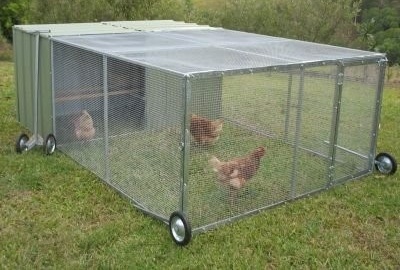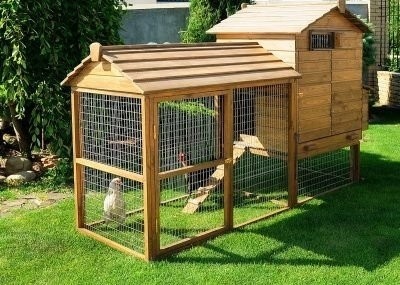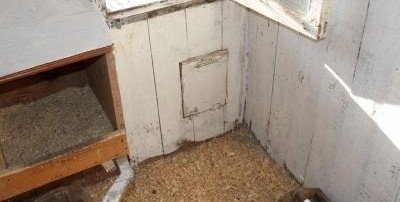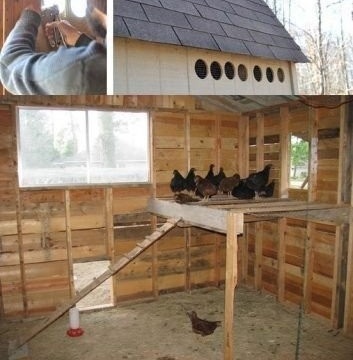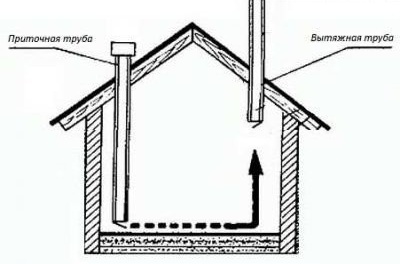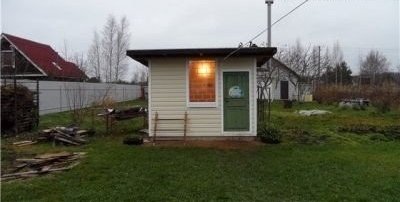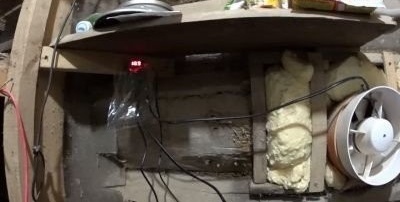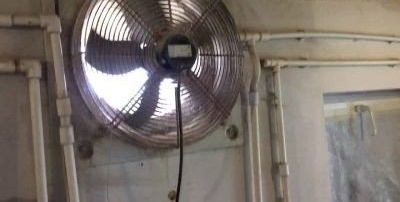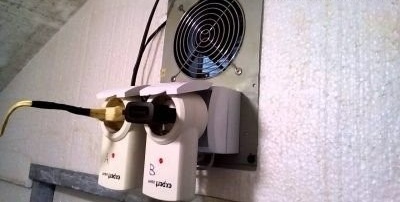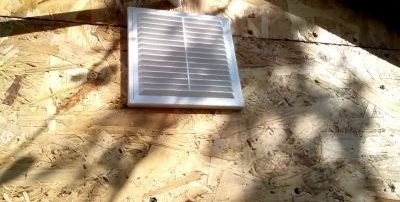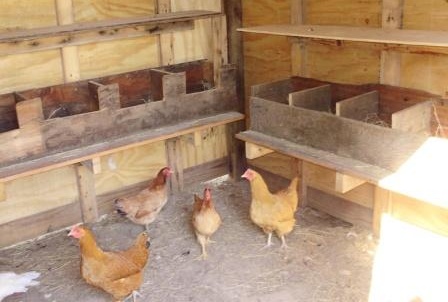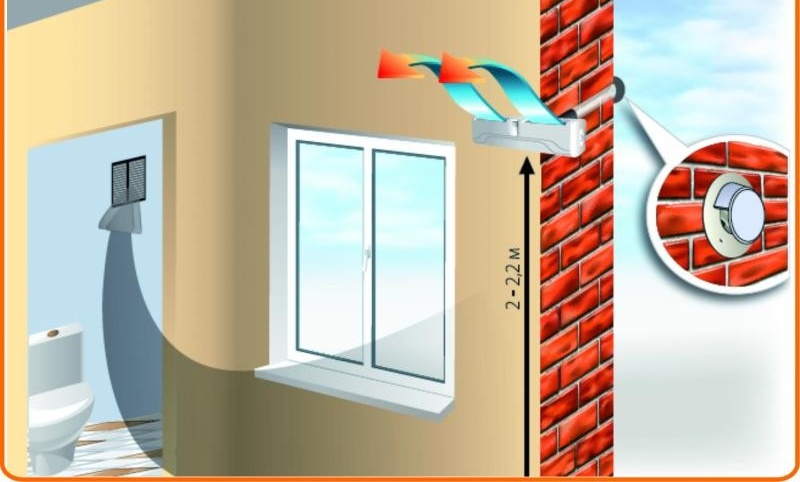How to make a chicken coop ventilation system
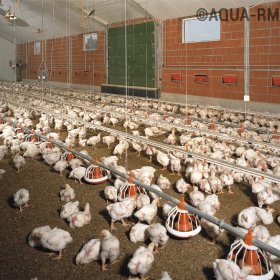
An important role in the construction of the chicken coop is proper ventilation. The lack of fresh air negatively affects the productivity of chickens, as well as their health. There are several types of ventilation that you can easily do with your own hands in the house. In order to make a high-quality ventilation system in the chicken coop, a minimum of investments and a maximum of zeal will be required.
Content
Ventilation in the home hen house in winter and summer
In each house - a chicken coop, a coop, a caterpillar - air flows must circulate correctly, carefully ventilating the room at all levels of the internal space.
Litter of chickens contains a large amount of urea: decomposing, it emits corrosive aggressive ammonia, harmful to the health of laying hens. The consequences are serious - not only the level and quality of bird productivity is reduced, but also the health of people in this room is harmed.
In the hot summer, only good ventilation can maintain the optimum temperature in the chicken coop and regulate air humidity. If the room where a large number of birds is located is too hot and stuffy, then the chickens will rapidly lose their appetite and less often lay eggs.
Since the body temperature of chickens in a healthy state is about 40.5–42aboutC, then they are more sensitive to changes in air temperature both in the direction of lowering and increasing.
The optimal indicator of air humidity for chickens is considered to be 59-79%.
In a closed and too hot room of the chicken coop, humidity is increased, since evaporation from drinkers and bird litter constantly occurs. The whole barn is filled with an unpleasant odor and pathogenic bacteria that poison the air of the room and the chickens themselves.
It is dangerous to allow such a condition of the chicken coop: birds will begin to lose immunity, which will entail the development of various diseases, and chickens will quickly die.And only due to proper ventilation you can save the chicken coop from the pungent odor and harmful bacteria and human bacteria.
In winter, ventilation provides the layers with fresh air flow. This is important in the cold season, when the density of chickens is high enough and they rarely go outside.
You can, of course, ventilate the house through the open door, but this is not recommended in cold weather: the chicken coop will quickly fill up with cold, frosty air, and it will take a lot of time and energy to re-heat it. And the birds will get cold and get sick. Therefore, during the construction of the chicken coop structure, the real owner will take care of the built-in ventilation.
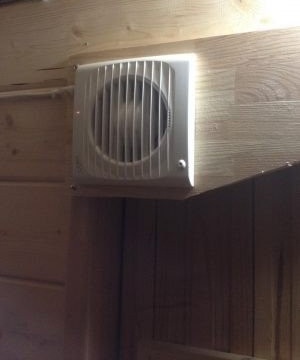
Built-in ventilation: one of the types of forced ventilation system in the chicken coop - there is a small but efficient motor inside
A competent and thoughtful ventilation device will help maintain the health of chickens and increase their livestock.
Coop ventilation patterns, fan performance calculation
In the modern world, there are three types of ventilation schemes for rooms for birds: the classical scheme, tunnel and mixed.
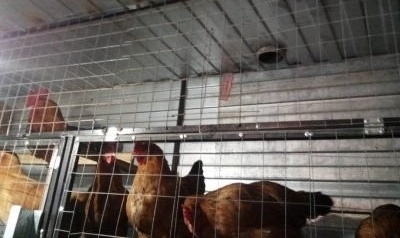
Built-in ventilation helps to timely clean the air in the barn and regulate the temperature inside the room
Classical (traditional) ventilation scheme
In the classic ventilation scheme involved:
- axial fan type BO-7.1 or 8.0;
- a fan for the roof of VKO-7.1P or a supply air shaft of the KPR type;
- ventilation system control station.
The number of fans is taken from the calculation of the norm in the summer - 6 cubic meters per hour per 1 kg of live poultry.
The working basis of such a scheme is axial window fans installed in the wall openings on both sides of the structure, as well as fans for the roof (or shaft) with insulation. They have a built-in cone-shaped air flow divider. The scheme works according to the type “air intake through the roof - output through the windows”, which allows to significantly reduce the cost of the heating system.
Such ventilation is used when keeping chickens on roosts and in cages. Axial fans with air capacity up to 18000 m3/ h good for air flow. And fans with an output of 8000-20000 m are suitable for an exhaust3/ h Fans are equipped with electric motors and gravitational closing shutter-blinds.
Tunnel ventilation scheme
The tunnel ventilation scheme involves:
- axial fan type VO-12.0;
- supply valve type KPR-12.0;
- Automated ventilation system control station.
The number of fans is calculated from the norm in the summer - 6 cubic meters per hour per 1 kg of live poultry.
This installation even in the hottest summer creates a comfortable temperature microclimate in the room. In the chicken coop, where the birds are kept in cages, the tunnel scheme allows you to prevent the appearance of "stagnant zones", driving air flows through the entire area of the room.
Exhaust fans are installed between the cells in the required quantity. Air enters through the supply openings (vents), which are mounted at the other end of the building. They use fans for supply with a high degree of power and capacity from 20,000 to 60,000 cubic meters per hour. Only valves are used for air outlet. The advantage of this system is a rather low total degree of electricity consumption.
Mixed ventilation scheme
The mixed scheme includes both of the previous ventilation schemes: classic and tunnel. It uses:
- axial fan type VO-7.1 and VO-12.0;
- supply valve type KPR-12.0;
- forced-air fan for a roof or shaft with a valve;
- station for controlling the operation of the ventilation system.
The number of fans is calculated in the same way as in the previous schemes (6 cubic meters per hour per 1 kg of live bird).
A mixed ventilation scheme is used in regions with a sharp temperature drop throughout the year. Such an installation copes with airing the chicken coop, fully lined with cell rows up to 5-6 tiers in height.
Air intake occurs simultaneously from two sides of the room, in two streams - vertical and horizontal (from the roof and from the side of the door), and dirty air is discharged from three sides (through three walls). Therefore, the efficiency of the mixed ventilation scheme is many times higher.
Types of ventilation systems for the chicken coop
Only three types of ventilation systems:
- natural ventilation system;
- supply and exhaust;
- forced (electromechanical).
To understand which one to choose, it is necessary to consider all aspects of the installation and operation of each of them.
House ventilation is designed for:
- eliminate odor;
- humidity reduction;
- stabilization of air temperature.
Properly organized ventilation will allow in the summer to cool the chicken coop and dry it, and in winter - to reduce the humidity level due to the constant running of cold air over the entire area and temperature control.
Natural ventilation system
The cheapest and most elementary way to arrange air exchange in the chicken coop is through ventilation.
- open all windows and doors;
- Install simple ventilation holes in the walls.
Just try to avoid strong drafts. Small ventilation openings above the door are good because they break the air flow into many small twists, not allowing to increase the overall thrust. Window panes at different levels (bottom and top of the walls) also cope with the task of careful ventilation.
In the cold season, such ventilation is unprofitable, since it requires spending additional energy on heating the chicken coop, but for the warm season it is ideal.
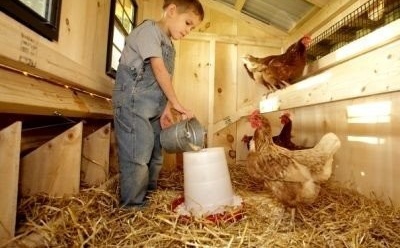
A chicken coop with windows saves money on energy costs for servicing a chicken coop in summer: windows are used for ventilation and lighting
Supply and exhaust ventilation system
In the house of 9-10 m2 and with 20 chickens such a ventilation device will be the most profitable and correct way. Large rooms install more sophisticated ventilation systems. Making a supply and exhaust system is quite simple:
- When installing the roof, leave two round pipe holes. The lower pipe is for air flow into the room (draft), the upper pipe is for output (exhaust). The lower one is set away from the bird perches, and the upper one is almost above them;
- we will need two plastic or galvanized pipes with a diameter of 20 cm and a length of about 2 meters. Some house owners instead of pipes put wooden structures;
- a pipe for air intake is installed above the roof by 40 cm, its lower end remains hanging above the floor by 30 cm;
- the upper part of the exhaust pipe rises one and a half meters above the roof, and only 20 cm is visible indoors;
- on top of the pipe they hide under an umbrella from rain and snow;
- pipes are installed in opposite parts of the room so that it is ventilated along its entire length.
Forced (electromechanical) ventilation system
Forced ventilation is used in large rooms, where the number of chickens is more than 500 pieces. But in home chicken coops, you can use such a system. The main thing is to choose a fan for your needs. When choosing a fan, study its technical specifications. In winter, experts recommend arranging air circulation at the rate of 4-6 cubic meters per 1 kg of live weight of the bird. In this case, the room temperature should be maintained within the range of + 18–20 aboutC, and humidity does not exceed 60–70 percent.
Fans crash into the window. A small, inexpensive fan starts manually, which is convenient for taking emergency measures to ventilate the chicken coop.
There are expensive fans - modern models with remote control. Also, specialized stores offer sensors that are built into the ceiling or walls, which automatically monitor the level of humidity and turn on ventilation when the norm is exceeded.
It is not difficult for a person who is familiar with electricity to independently assemble and adjust the operation of such ventilation.
The disadvantage of such a system is a serious consumption of electricity, but even it can be learned to regulate.
Video: horizontal ventilation of plastic pipes
Video: Installation of traction ventilation in a village coop
Video: Demonstration of the operation of automatic ventilation with temperature sensors
When choosing a ventilation system, focus on the climate of the region. Ventilation, carefully selected for the size and type of the chicken coop, according to technical specifications satisfying all the requirements in terms of cleaning and maintaining the indoor climate, correctly installed, will save from unnecessary problems. And happy laying hens will delight you in both winter and summer.

